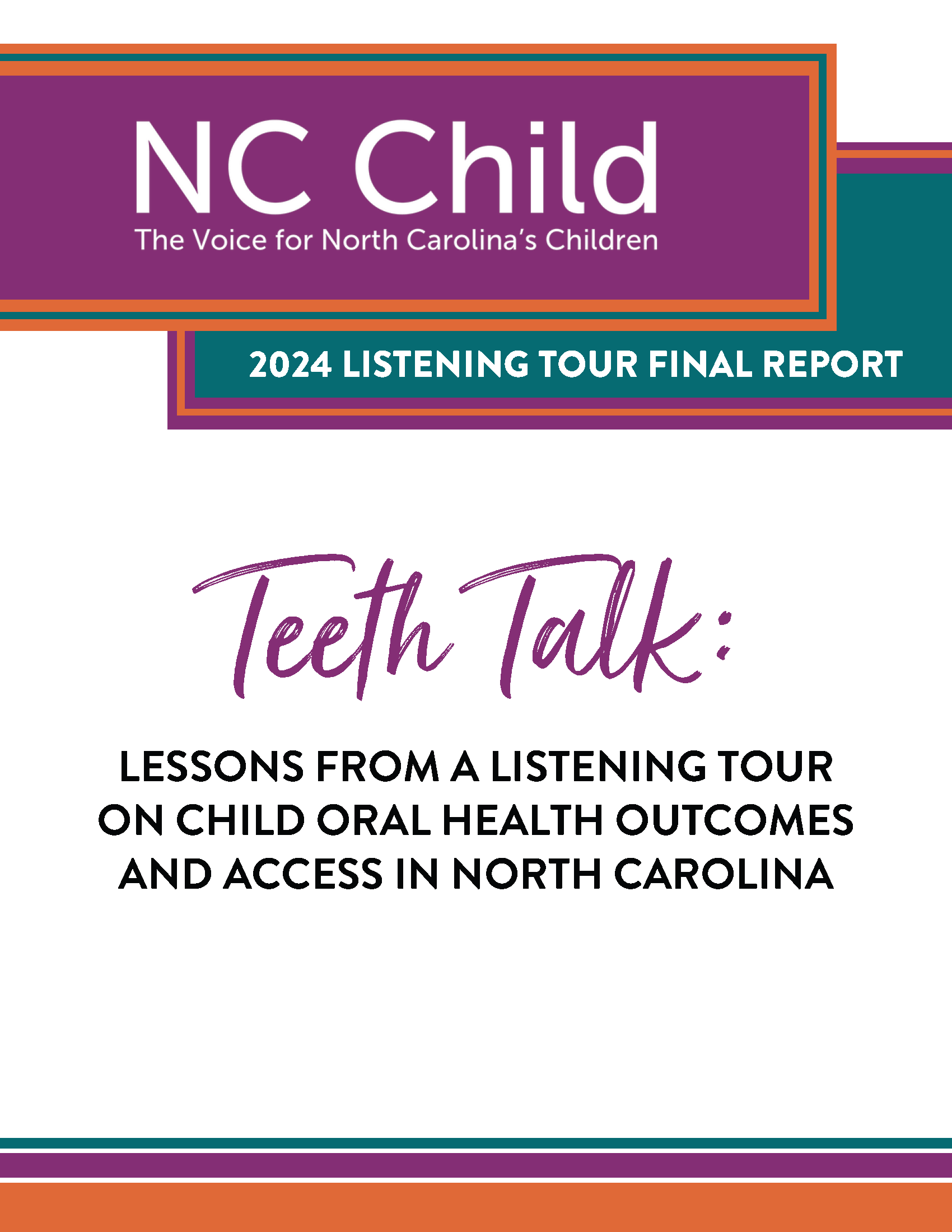Executive Summary
Oral health is vital to an individual’s overall health, both physically and emotionally, but this connection is even more profound in the lives of children. Oral healthcare is a basic need for children in our state, but access is no guarantee. Currently in North Carolina, children’s oral health outcomes are moving in the wrong direction. Right now, there are more kindergartners with untreated tooth decay and urgent dental needs than in years past. These outcomes vary by race, ethnicity, and geography, and the disparities we see in North Carolina, felt particularly in rural and minority communities, demonstrate the barriers that exist to accessing oral health care.
While many measures have gotten worse since COVID-19, outcomes were trending in the wrong direction leading up to 2020 and many of the barriers to oral health care in North Carolina existed before the pandemic. Too many families could not access oral health care prior to COVID-19; the pandemic simply exacerbated these long-standing problems, making it even more difficult for children to see dental providers for basic preventative oral health care.
NC Child sought to better understand these issues. By speaking to parents, dental care professionals, public health officials, school district personnel, and community members we heard firsthand from those with lived experience providing care or trying to find it for their families. By doing so, we learned about the distinct challenges of our state’s oral health system that complements and puts a face behind quantitative data.
We heard from participants what the state of oral health looks like in their household and their community. Discussions tended toward issues like a lack of access to providers, provider shortages, insurance and cost barriers to dental care, knowledge gaps among communities regarding oral health, and access for Medicaid patients. Social determinants of health like food insecurity, low incomes, and housing affordability also stand out as substantial barriers to seeking out oral health care. Participants noted that oral health care is often deprioritized for families that struggle to make ends meet.
Of note, NC Child also learned about how attitudes and behaviors around oral health practices and accessing care are influenced by generational and familial norms.
When speaking with community members on the 20-stop Listening Tour, participants often highlighted local initiatives that sought to address these barriers, as well as ways in which local access to care and overall child oral health outcomes could be improved. Common themes around opportunities for improvement centered on improving Medicaid coverage for dental services, expanding the scope of school-based oral health, and educating parents early about the importance of oral health.
Why This Matters
A child’s oral health has short- and long-term impacts on their growth and development. In the short term, children with poor oral health are more likely to develop painful infections, suffer from self-esteem issues, have difficulties concentrating in school, and miss school days. In the long term, positive oral health practices early on in a child’s life set the tone for positive oral health habits and outcomes as children grow into adolescents and adults. North Carolina’s child oral health outcomes have gotten worse in recent years, and significant disparities in child oral health outcomes persist across geographic and demographic lines. As discussed below, insufficient access to oral health care is one of the primary drivers of poor child oral health outcomes in the state. Simply put, there are not enough dentists and oral health providers to serve North Carolina families, especially in rural Eastern and Western North Carolina.
Download
